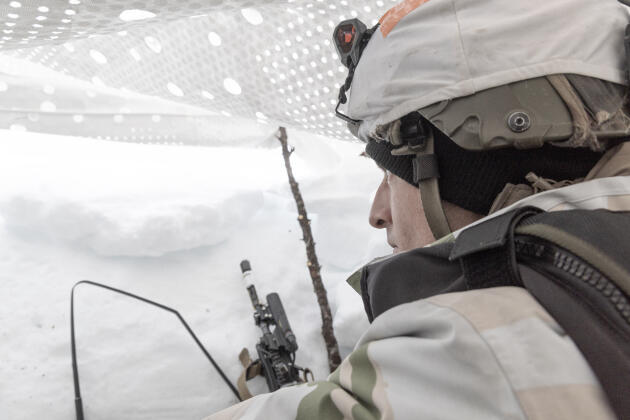Since Finland’s accession to NATO in April 2023, the alliance has been faced with the daunting task of securing an additional 1,300 kilometres of border with Russia.
This expansion has not only stretched NATO’s geographical reach but has also necessitated a reevaluation of its operational capabilities, particularly in extreme climatic conditions prevalent in the Arctic region.
In a remote Norwegian hamlet near the Arctic Circle, NATO forces are undergoing rigorous training to navigate and operate effectively in the harsh Arctic environment.
Two French Alpine hunters stationed near Suolovuopmi find themselves knee-deep in snow, concealed in combat holes covered with heat-shielding netting.
Their mission: to impede the advance of enemy armoured vehicles and facilitate the defence preparations of nearby villages, such as Masi.
Corporal Guillaume, hailing from the Seventh Bataillon of Alpine Hunters (BCA) in southeastern France, sheds light on the challenges they face.
Equipped with Eryx anti-tank missiles with a limited range of 600 meters, maintaining stealth and invisibility until the last possible moment becomes paramount to avoid becoming targets themselves.
The position, situated atop a snow-covered hill amidst piercing polar winds, demands vigilance and endurance from the French section throughout the frigid Arctic night, aided only by their night vision goggles amidst temperatures plummeting to what feels like -25°C.
The scene in Suolovuopmi encapsulates the evolving nature of NATO’s operations in the wake of Finland’s accession and the subsequent need to adapt to new strategic realities.
With the Arctic emerging as a theatre of heightened geopolitical competition and potential conflict, NATO’s presence in the region has assumed greater significance than ever before.
The alliance’s efforts to fortify its northern flank reflect a broader commitment to collective defence and deterrence against potential adversaries.
By bolstering its capabilities and presence in the Arctic, NATO aims to safeguard the security and stability of its member states while sending a clear message of resolve to those who may seek to challenge its unity and cohesion.
The training exercises undertaken by NATO forces in the Arctic underscore the importance of readiness and preparedness in confronting multifaceted security threats.
From mastering Arctic warfare tactics to adapting to the unforgiving climate, NATO troops are honing their skills to ensure they can effectively execute their missions in any environment, regardless of the challenges they may encounter.
As NATO continues to navigate the complex geopolitical landscape of the Arctic, partnerships and cooperation with regional stakeholders, including Norway and now Finland, will be instrumental in fostering stability and security in the region.
Through collective action and unity of purpose, NATO remains steadfast in its commitment to upholding the principles of freedom, democracy, and territorial integrity, even in the harshest of environments.
This article was created using automation technology and was thoroughly edited and fact-checked by one of our editorial staff members



